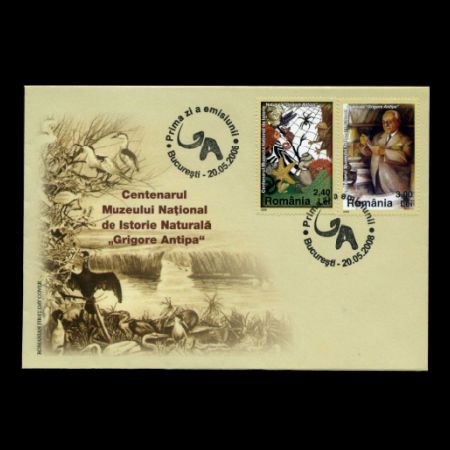| Issue Date | 20.05.2008 |
| ID | Michel: 6296-6297 Scott: Stanley Gibbons: Yvert: UPU: RO036.08 Category: pF |
| Author | |
| Stamps in set | 2 |
| Value | Lei 2,40 Lei 3,00 |
| Size (width x height) | 33x48mm |
| Layout | 2 Mini-sheets 8 stamps and one tab each |
| Products | FDC x1 MS x2 |
| Paper |
|
| Perforation | 13.5x13.5 |
| Print Technique | |
| Printed by | Fabrica de timbre |
| Quantity | |
| Issuing Authority | Compania Nationala Posta Romana SA |
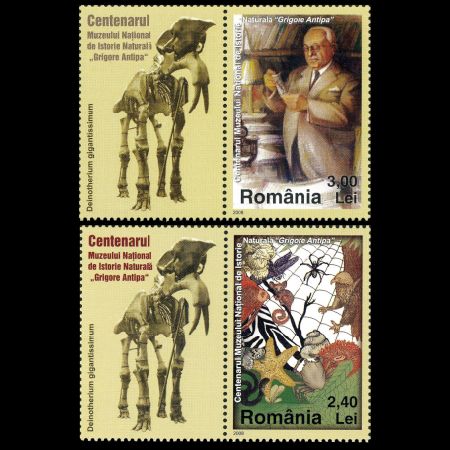
One hundred years ago, in the presence of King Carol I, King Ferdinand, and Princess Maria, the National Natural History Museum would officially open its doors in a new "Highway" building.
To celebrate the event, Romfilatelia introduces into circulation the postage stamps issue Centenary of the "GRIGORE ANTIPA" National Natural History Museum.
The history of the museum goes further back in time, in 1834, when the ruller Alexandru Ghica endorsed the setup decree of the National Museum Bucharest. The first collection's curator was Carol Wallenstein de Vella (an Austrian of Croatian origin) in 1837. Then followed the tutor Carlo Ferrerati (Italian) in 1860, and in 1867, Prof. Gregoriu Stefanescu was elected museum director. In 1893, Grigore Antipa was appointed director of State Zoological Collections. One year later, these collections are moved to new headquarters, in a building on Polona Street. The construction of the new headquarters in Victoriei Square begun in 1904 and the building was finalized and inaugurated within four years and it was designated as the Museum of Zoology. With the inauguration of the museum, the first zoo-geographical dioramas in the world were revealed (Tundra, Prairie, African Savannah, and Sahara) and due to their high quality served as a model for many museums in the country and outside its borders.
6 years after this event, in 1914, occasioned by the inauguration of 11 new presentation halls, King Carol I grants a new name to the institution, namely the National Natural History Museum.
In 1933, as a recognition of Grigore Antipa's merits, King Carol II names the museum after the famous scholar biologist, evolutionist, ichthyologist, ecologist, oceanologist, museum's custodian and economist.
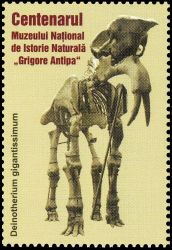
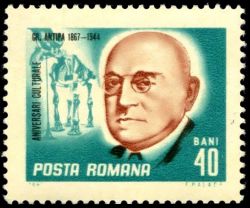 The "Antipa" Museum, one
of the richest in the world, hosts more than two million exponates.
Most of these are to be found in the 39 halls of the museum. The
exponates cover various domains such as: zoology, mineralogy,
anthropology, paleontology, compared anatomy, ethnography. During the
years, the museum enriched with scientifical collections among other,
including items that are unique in the world. Of extreme importance are
the creature group collections out of which we hereby include The
"Aristide Caragea" Butterfly Collection, counting more than 120,000
items, The "Bielz" Mollusc Collection, with more than 90,000 items, The
"Petre Banarascu" Fish Collection, with more than 5,000 items, The
Collection of Sea Invertebrata "Mihai Bacescu", with more than 11,400
items, The Collection of Mammals from around the world and the local
Romanian fauna counting more than 8,000 items, and the Collection of
Birds from local fauna and abroad with more than 9,000 exponates. At
the same time, the museum enriches with every single year passing by
with all sorts of materials that are either donations or brought about
by the work conducted by the museum researchers or by means of internal
or external expeditions performed by specialists.
The "Antipa" Museum, one
of the richest in the world, hosts more than two million exponates.
Most of these are to be found in the 39 halls of the museum. The
exponates cover various domains such as: zoology, mineralogy,
anthropology, paleontology, compared anatomy, ethnography. During the
years, the museum enriched with scientifical collections among other,
including items that are unique in the world. Of extreme importance are
the creature group collections out of which we hereby include The
"Aristide Caragea" Butterfly Collection, counting more than 120,000
items, The "Bielz" Mollusc Collection, with more than 90,000 items, The
"Petre Banarascu" Fish Collection, with more than 5,000 items, The
Collection of Sea Invertebrata "Mihai Bacescu", with more than 11,400
items, The Collection of Mammals from around the world and the local
Romanian fauna counting more than 8,000 items, and the Collection of
Birds from local fauna and abroad with more than 9,000 exponates. At
the same time, the museum enriches with every single year passing by
with all sorts of materials that are either donations or brought about
by the work conducted by the museum researchers or by means of internal
or external expeditions performed by specialists.
Note: a tab on upper-left corner of each mini-sheet shows fossil of Dinotherium giganteum - the most impressive exponats of the museum. First time this fossil was depicting on Romania's stamp on 1967.
| FDC | Mini Sheets |
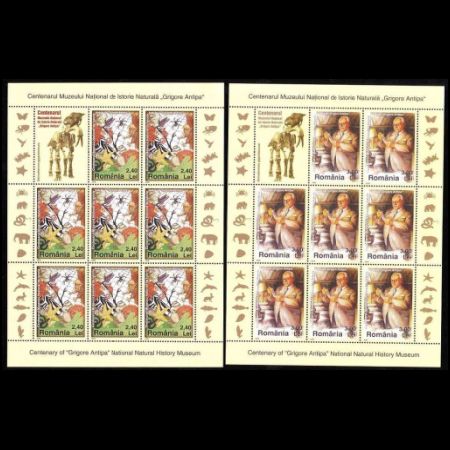 |
|
References: Romfilatelia
 |
|
Last update 26.11.2017
Any feedback, comments or even complaints are welcome: [email protected] (you can email me on ENglish, DEutsch, or RUssian)
